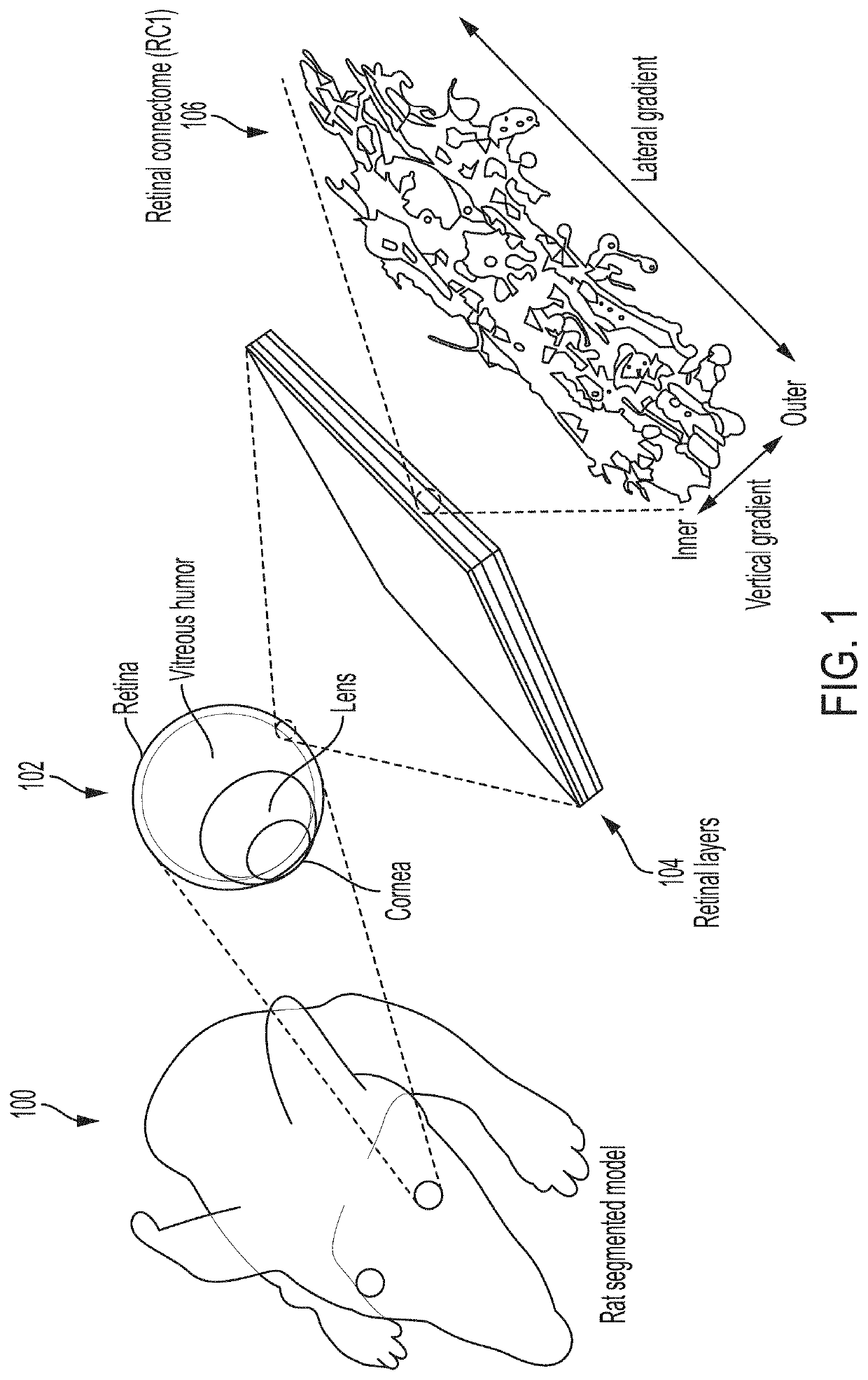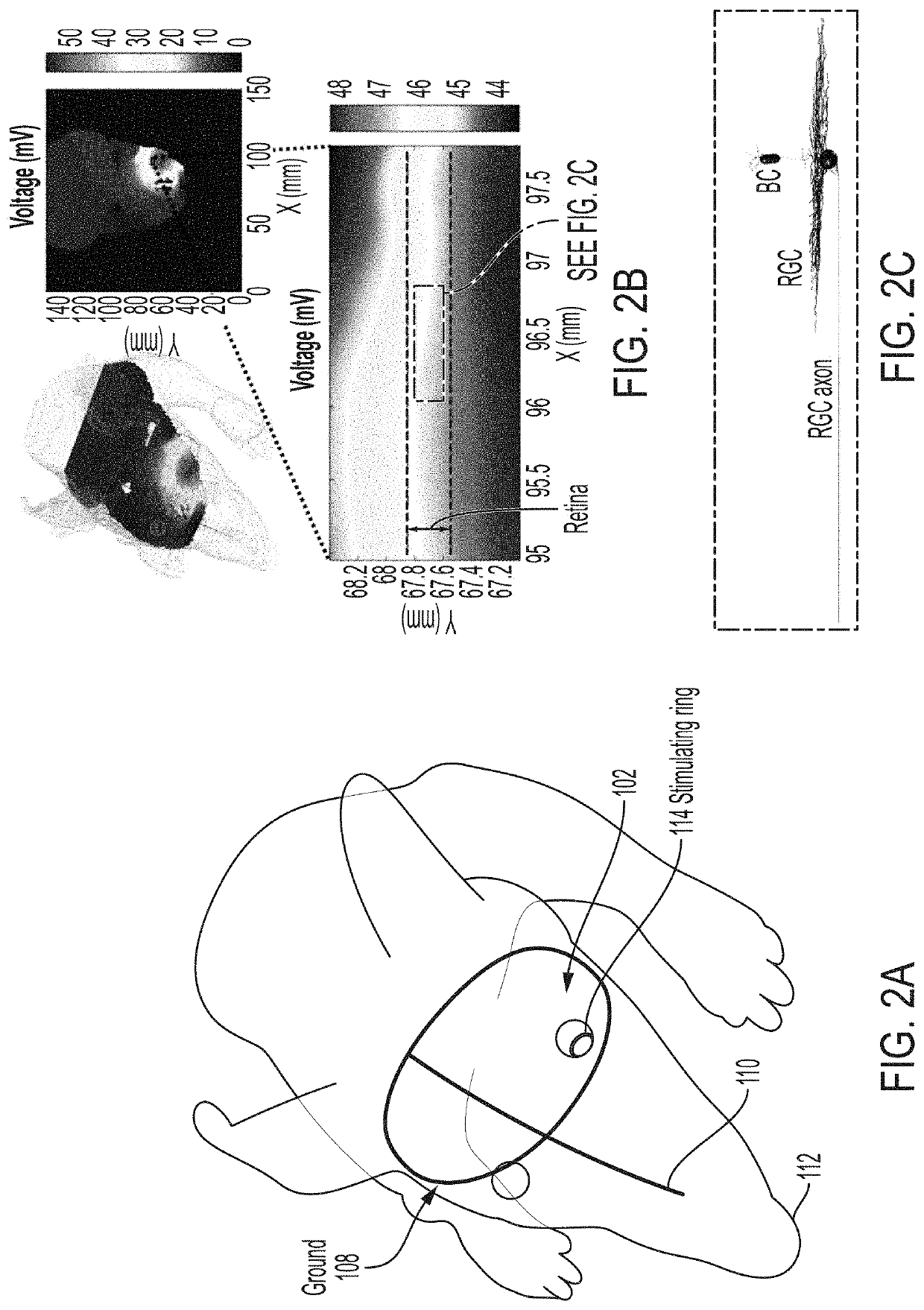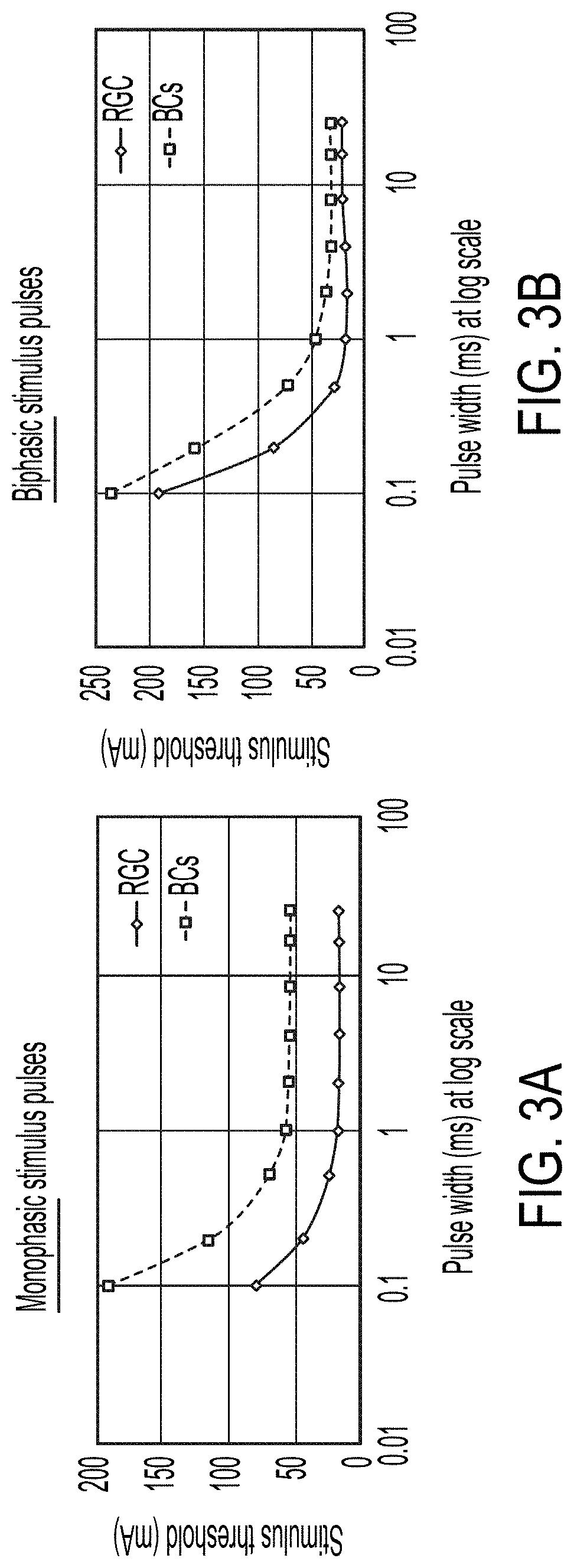Bioelectronic lens (e-lens) system for electrical stimulation and neuroprotection of the retina
a bioelectronic lens and retinal technology, applied in the field of bioelectronic lens (elens) system for electrical stimulation and neuroprotection of the retina, can solve the problems of no cure, no systematic research conducting the most effective electrical stimulation approach, etc., and achieve the effects of minimal invasiveness, safe and effective delivery of electric fields in the retina, and maximum safety of electrical stimulation
- Summary
- Abstract
- Description
- Claims
- Application Information
AI Technical Summary
Benefits of technology
Problems solved by technology
Method used
Image
Examples
Embodiment Construction
[0074]The systems and methods described herein show that non-invasive electrical stimulation may control the induced electric fields in neurons with implications for neuroprotection. The systems and methods described herein allow for systematic, and therefore more reliable and reproducible, retinal and central nervous system neuroprotection.
[0075]The systems and methods described herein use a designed electrical stimulation strategy to direct the induced voltage gradients towards the outer retinal neurons, which are influenced at the early stages of retinal degeneration, thereby slowing the progression of neural degeneration. The pathological mechanisms in prevalent retinal disease (e.g., photoreceptor degeneration—such as Retinitis Pigmentosa (RP) and Age-Related Macular Degeneration (AMD)—or Primary Open Angle Glaucoma (POAG)) are becoming better understood. In spite of this, because of the more than 100 mutations that cause RP, for example, curing this family of mutations beyond ...
PUM
 Login to View More
Login to View More Abstract
Description
Claims
Application Information
 Login to View More
Login to View More - R&D
- Intellectual Property
- Life Sciences
- Materials
- Tech Scout
- Unparalleled Data Quality
- Higher Quality Content
- 60% Fewer Hallucinations
Browse by: Latest US Patents, China's latest patents, Technical Efficacy Thesaurus, Application Domain, Technology Topic, Popular Technical Reports.
© 2025 PatSnap. All rights reserved.Legal|Privacy policy|Modern Slavery Act Transparency Statement|Sitemap|About US| Contact US: help@patsnap.com



